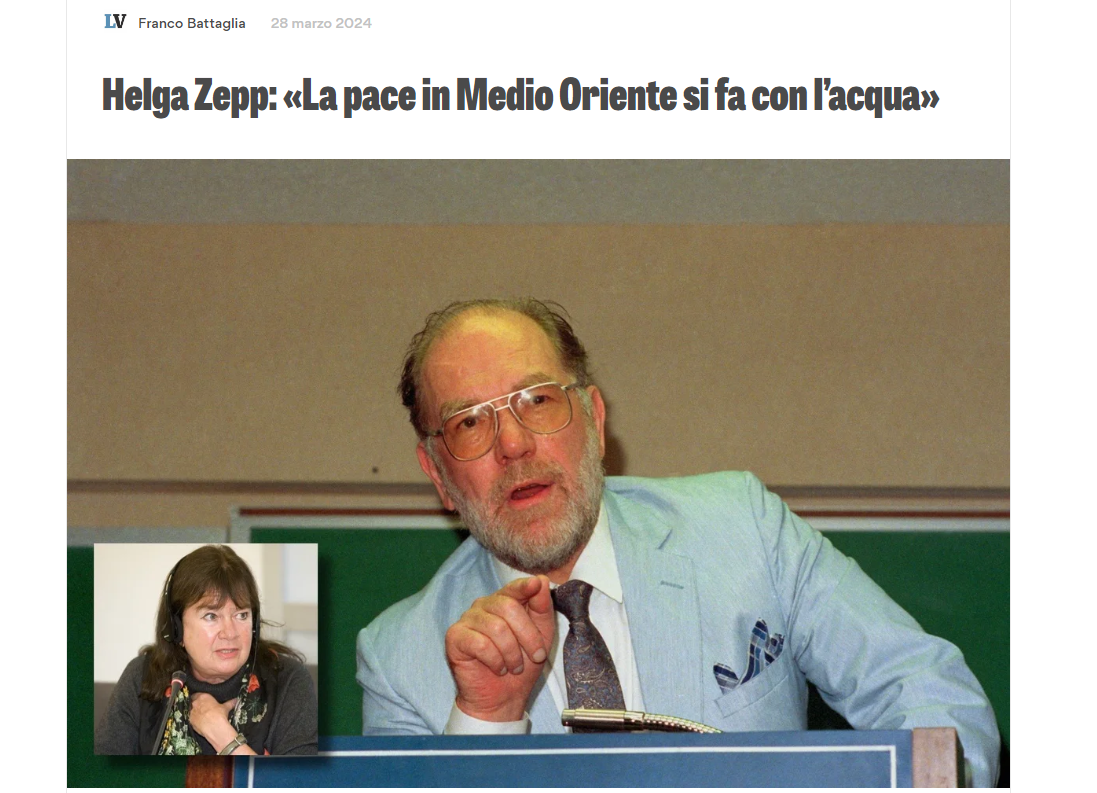March 28, 2024 (EIRNS)—The Italian daily La Verità published on March 28 a long interview that Helga Zepp-LaRouche, founder and chairwoman of the International Schiller Institute, gave to Franco Battaglia on the LaRouche Oasis Plan to bring peace to Southwest Asia. In the interview, Franco Battaglia, professor of physical chemistry at the Modena University, Mrs. Zepp-LaRouche explains that “to stabilize the region, the Oasis Plan, drafted by my husband [Lyndon LaRouche] 30 years ago, must be adopted. We need desalination plants, powered by gas and nuclear energy. Development will stop conflicts.”
Professor Battaglia starts the interview by stating: “There are minds that, as soon as you get close to them, perhaps because you happened to read some of their writings, stimulate your curiosity and you want to know more; and when you know more you realize they are geniuses. Lyndon LaRouche—author of a treasure trove of books and thousands of articles—is among them. A controversial figure, an inspiration to many heads of state—including Indian Prime Minister Indira Gandhi—Lyndon was an 8-time candidate for the U.S. presidential nomination, 7 of them for the Democratic Party. He was given an ante litteram Trump treatment. As an advisor to Ronald Reagan, he was the one who conceived the (somewhat visionary in my personal opinion) Strategic Defense Initiative, later adopted as his own by the Republican President. No less versatile is his wife Helga, who, to keep alive the eclectic thinking of her lifelong companion (who passed away at 96, in 2019), founded the Schiller Institute as early as 1984. One of Schiller Institute’s recent projects coincides with what I think needs to be done for the world’s poor to redeem them from their plight: We need to do the opposite of what the Greens say to do, and make abundant and cheap energy available to them.”
Mrs. Zepp-LaRouche then explains: “The Oasis Plan focuses primarily on solving the biggest obstacle to development in a region that is now a land of conflict—the shortage of fresh water—through the construction of a network of seawater desalination plants. These plants should be built along two new canals—one linking the Red Sea to the Dead Sea and the other linking the Dead Sea to the Mediterranean—with the specific purpose of transporting water and providing hydroelectric electricity, which, in turn—along with nuclear plants along these canals and on the Mediterranean and Red Sea coasts and the vast quantities of natural gas on the coasts of Gaza, Israel, Lebanon, Syria and Egypt—would feed desalination plants to green the vast deserts of the region and fuel a process of industrialization in the Middle East. The use of nuclear power would allow the region’s hydrocarbon resources to be used in chemicals and for industry. The Plan envisions a network of transportation infrastructure that would improve physical connectivity between all nations in the region, transforming a region of conflict into a center of interaction, a crossroads. Regional highways and rail networks would enable the entire area to operate from stronger economic foundations.







